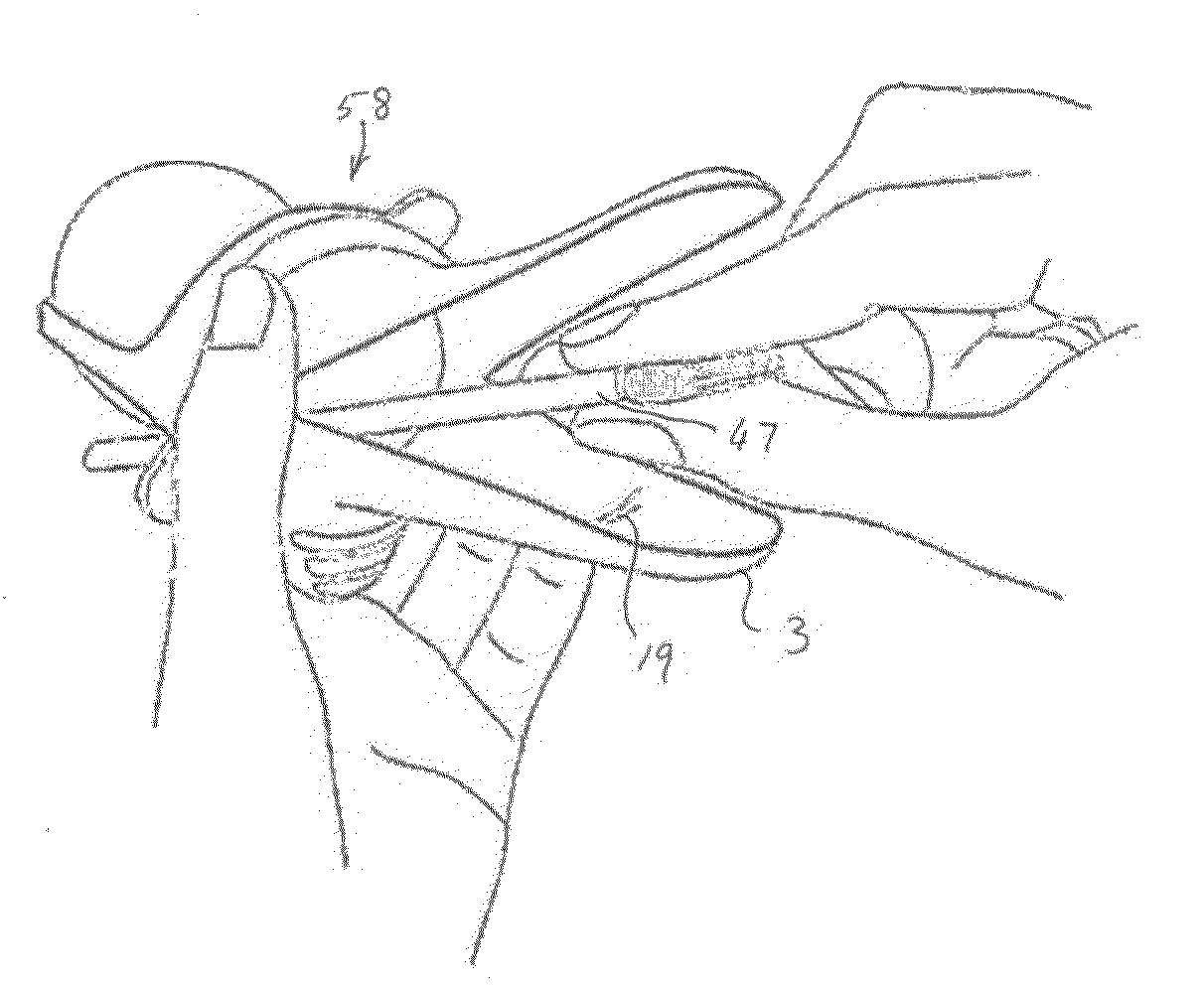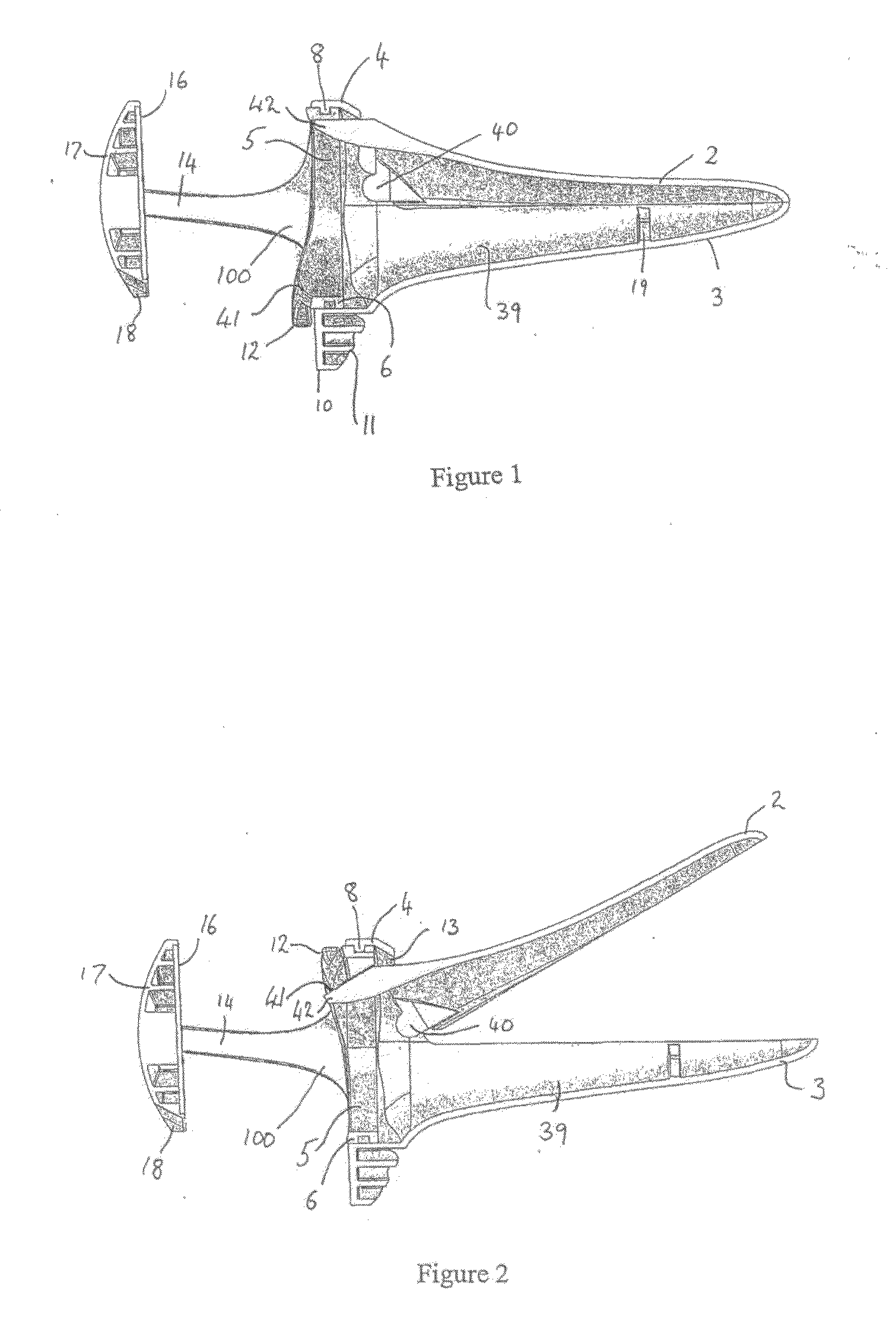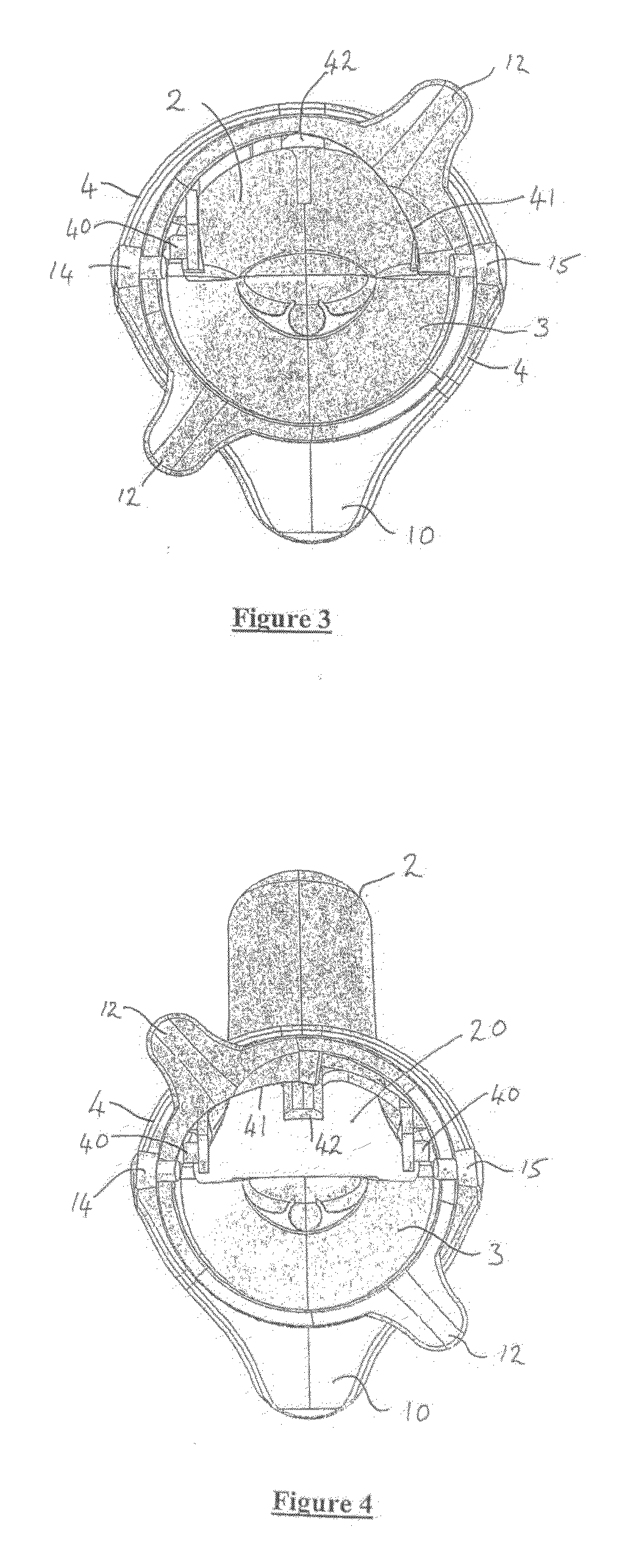Speculum
a technology of speculum and speculum, applied in the field of speculum, can solve the problems of occupying a lot of health practitioner time, reducing the likelihood of contamination, and not fulfilling the potential of smear tests, so as to reduce the risk of contamination, increase the likelihood, and simplify the procedure
- Summary
- Abstract
- Description
- Claims
- Application Information
AI Technical Summary
Benefits of technology
Problems solved by technology
Method used
Image
Examples
Embodiment Construction
[0027]Referring initially to FIGS. 1 to 4, there can be seen a speculum 1 in accordance with the present invention; in FIGS. 1 and 3 it is in a closed position and in FIGS. 2 and 4 it is in an open position.
[0028]The speculum has a device body 100 that includes an outer annulus 4 and two blades 2, 3 that are connected to the body 100. The blades are opposed to each other and extend parallel to each other. The first blade 2 carries a pair of opposed hinge pins 40 that engage in corresponding sockets in the device body 100, whereby the first blade is pivotally connected with respect to the body 100. The second blade 3 is fixedly connected to the body and indeed integral with it.
[0029]The inside surfaces of the blades 2, 3 are generally concave and so define an internal space 39, while their outer surfaces are convex and taper towards the end of the speculum so that together they form a conical shape. When in the closed position, the edges of the two blades are in register. The blades ...
PUM
 Login to View More
Login to View More Abstract
Description
Claims
Application Information
 Login to View More
Login to View More - R&D
- Intellectual Property
- Life Sciences
- Materials
- Tech Scout
- Unparalleled Data Quality
- Higher Quality Content
- 60% Fewer Hallucinations
Browse by: Latest US Patents, China's latest patents, Technical Efficacy Thesaurus, Application Domain, Technology Topic, Popular Technical Reports.
© 2025 PatSnap. All rights reserved.Legal|Privacy policy|Modern Slavery Act Transparency Statement|Sitemap|About US| Contact US: help@patsnap.com



